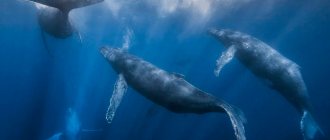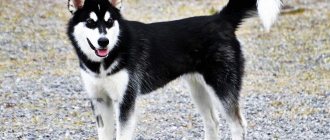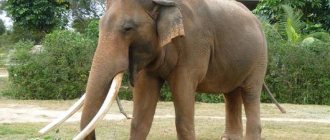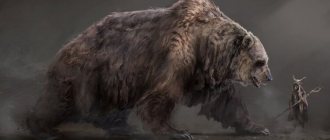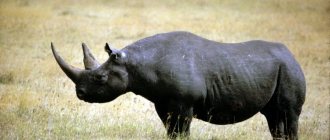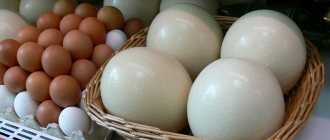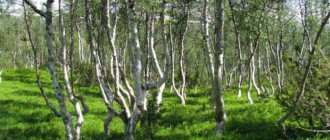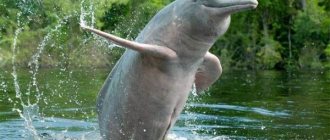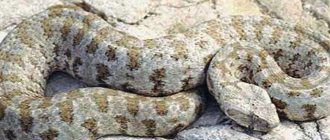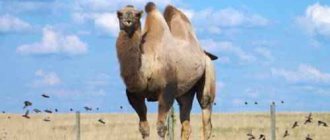- Wild animals
- >>
- Birds
Moa are eleven species in six genera, now extinct flightless birds endemic to New Zealand. Experts estimate that before the Polynesians settled the New Zealand Islands around 1280, the Moa population varied around 58,000 individuals. Moa have been the dominant herbivores in New Zealand's forest, bush and subalpine ecosystems for thousands of years. The disappearance of Moa occurred around 1300 - 1440 ± 30 years, mainly due to excessive hunting by the arriving Maori people.
Origin of the species and description
Photo: Moa
Moas belong to the order Dinornithiformes, which is part of the ratite group. Genetic studies have shown that its closest relative is the South American tinamous, which is capable of flight. Although it was previously believed that kiwi, emu and cassowaries were most closely related to moa.
Video: Moa bird
Dozens of moa species were described in the late 19th and early 20th centuries, but many varieties were based on partial skeletons and duplicated each other. There are currently 11 officially recognized species, although recent studies of DNA extracted from bones in museum collections suggest that distinct lineages exist. One of the factors that has caused confusion in the taxonomy of Moa is intraspecific variation in bone size between ice ages, as well as extremely large sexual dimorphism in several species.
Interesting fact: Dinornis species probably had the most pronounced sexual dimorphism, with females reaching up to 150% of the height and up to 280% of the weight of males, so until 2003 they were classified as separate species. A 2009 study found Euryapteryx gravis and curtus to be the same species, and a 2012 morphological study interpreted them as subspecies.
DNA analyzes have determined that a number of mysterious evolutionary lineages have occurred within several genera of Moa. They may be classified as species or subspecies; M. benhami is identical with M. didinus because the bones of both have all the basic characters. Size differences may be explained by their habitats combined with temporal discrepancies. A similar temporary change in size is known in Pachyornis mappini, which lived on the North Island. The earliest remains of moa come from the Miocene fauna of Saint Bathan.
Taxonomy
DNA analysis has shown that the moa's closest living relative is the tinamu[6].
Thanks to genetic analysis, many previously suspected species described from fragmentary skeletons have been rejected. Previously, the order was divided into 2 families (Dinornithidae and Emeidae); in the 2009 system of Bunce and colleagues, 3 families and 9 species are distinguished [3]:
- Family Dinornithidae - True moa Genus Dinornis - Greater moa Dinornis novaezealandiae - Greater moa (North Island)
- Dinornis robustus
(South Island)
- Genus Anomalopteryx Anomalopteryx didiformis
(North and South Island)
- Emeus crassus
(South Island, eastern part)
- Euryapteryx curtus - Southern moa (Northern and eastern South Island)
- Pachyornis australis
(South Island, Southern Alps highlands)
(South Island, eastern part)
(North Island)
- Genus Megalapteryx
Megalapteryx didinus - Forest lesser moa (South Island, uplands)
Appearance and features
Photo: Moa bird
The discovered moa remains were reconstructed into horizontal skeletons to project the bird's original height. Analysis of the vertebral joints shows that the animals' heads were tilted forward according to the kiwi principle. The spine was not attached to the base of the head, but to the back of it, indicating a horizontal alignment. This gave them the ability to graze through low vegetation, but also be able to raise their heads and scan the trees when necessary. These data led to a revision of the height of the larger moa.
Interesting fact: Some species of moa reached gigantic sizes. These birds did not have wings (they even lacked their rudiments). Scientists have identified 3 moa families and 9 species. The largest, D. robustus and D. novaezelandiae, grew to gigantic sizes relative to existing birds, namely their height was about 3.6 m, and their weight reached 250 kg.
Although no records exist of the sounds moas make, some clues about their vocal calls can be gleaned from the fossil remains of the bird. Moa's tracheae were supported by numerous rings of bone known as trachea rings.
Excavations of these rings showed that at least two genera of Moa (Emeus and Euryapteryx) had elongated tracheas, namely, their trachea reached 1 m in length and created a huge loop inside the body. They are the only birds that have this feature; in addition, several groups of birds that live today have a similar structure of the larynx, including: cranes, guinea fowl, mute swans. These characteristics are associated with a resonant, deep sound that can reach great distances.
Reptiles of New Zealand
There are no snakes among New Zealand's reptiles. Their import into the archipelago is strictly prohibited. In the class of reptiles, lizards reign.
Hatteria
Member of the beaked group. The body length of the tuataria lizard is about 80 cm. Weight reaches 1.3 kg. These creatures live for about 60 years. Zoologists have found hatteria that have lived for 100 years. Lizards are no longer found on the main New Zealand islands.
Hatterias are capable of reproduction from the age of 20. They lay eggs once every 4 years. Low reproduction rates can lead to the eventual extinction of these reptiles.
Hatteria has a so-called parietal eye. This is an archaic organ capable of responding to light levels. The parietal eye does not form images; it is assumed that it facilitates orientation in space.
New Zealand geckos
- New Zealand viviparous geckos. They spend most of their time in the crown of trees, where they catch insects. The body color corresponds to the habitat: brown, sometimes green. The genus of viviparous native geckos includes 12 species.
- New Zealand green geckos. Endemic genus of reptiles. Lizards 20 cm long. The body is painted green; light spots with outlines provide additional camouflage. Spends most of its time in bushes. Feeds on insects and invertebrates. The genus contains 7 species of lizards.
New Zealand skinks
This genus includes 20 species of skinks that inhabit New Zealand. The main feature of skinks is their cover, which resembles fish scales. The subcutaneous layer is strengthened by bone plates - osteoderms. Lizards are insectivores and are common in all biotopes of the archipelago.
Where did the moa live?
Photo: Extinct moa birds
Moa is endemic to New Zealand. Analysis of the recovered fossil bones has provided detailed data on the habitat preferences of specific moa species and revealed distinctive regional faunas.
South Island
Two species, D. robustus and P. elephantopus, are native to the South Island.
They preferred two main faunas:
- fauna of west coast beech forests or Nothofagus with high rainfall;
- The dry rainforest and scrub fauna east of the Southern Alps was populated by species such as Pachyornis elephantopus (thick-legged moa), E. gravis, E. crassus and D. robustus.
Two other South Island moa species, P. australis and M. didinus, may be included in the subalpine fauna along with the common D. robustus and P. australis.
Bones of the animal have been found in caves in the north-west areas of Nelson and Karamea (such as Sota Hill Cave), as well as in some places in the Wanaka area. The species M. didinus was called the mountain moa because its bones are often found in the subalpine zone. However, this also occurred at sea level where suitable steep and rocky terrain existed. Their distribution in coastal areas was unclear, but they were found in several places such as Kaikoura, Otago Peninsula, and Karitane.
North Island
Less information is available about the paleofaunas of the North Island due to a lack of fossil remains. The basic pattern of relationships between moa and habitat was similar. Although the South and North Islands contained some similar species (E. gravis, A. didiformis), the majority belonged to only one island, showing divergence over several thousand years.
High rainfall North Island forests were dominated by D. novaezealandiae and A. didiformis. Other moa species present on the North Island (E. gravis, E. curtus and P. geranoides) lived in drier forest and scrub habitats. P. geranoides was found throughout the North Island, while the distributions of E. gravis and E. curtus were almost mutually exclusive, with the former only found in coastal areas in the southern North Island.
Now you know where the moa bird lived. Let's see what she ate.
Notes
- ↑ 12
Dinornis / Kurochkin E. N. // Atmospheric dynamics - Railway junction. - M.: Great Russian Encyclopedia, 2007. - P. 23. - (Big Russian Encyclopedia: [in 35 volumes] / chief editor Yu. S. Osipov; 2004-2017, vol. 9). — ISBN 978-5-85270-339-2. - ↑ Vinokurov A. A.
Rare and endangered animals. Birds: Reference. manual / ed. V. E. Sokolova. - M.: Higher School, 1992. - P. 47. - 446 p. : ill. — 100,000 copies. — ISBN 5-06-002116-5. - ↑ 1 2 Bunce M., Worthy TH, Phillips MJ, Holdaway RN, Willerslev E., Haile J., Shapiro B., Scofield RP, Drummond A., Kamp PJJ, Cooper A.
The evolutionary history of the extinct ratite moa and New Zealand Neogene paleogeography (English) // Proceedings of the National Academy of Sciences. - 2009. - November 18 (vol. 106, no. 49). — P. 20646—20651. — ISSN 0027-8424. - doi:10.1073/pnas.0906660106. [to correct] - ↑ Moas became extinct only because of humans. Archived copy dated August 10, 2012 on the Wayback Machine.
- ↑ Worthy.
Mummified moa remains from Mt Owen, northwest Nelson // Notornis. - 1989. - T. 36, issue. 1. - pp. 36–38. - ↑ Dani Cooper.
Ancient birds grew fat and lazy: study (English). ABC Science (25 January 2010). Archived from the original on August 29, 2014.
What does a moa eat?
Photo: Moa
No one has seen how or what moas eat, but their diet has been reconstructed by scientists from the fossilized contents of the animal’s stomachs, from preserved droppings, and also indirectly from morphological analysis of skulls and beaks and analysis of stable isotopes from their bones. It was learned that the moa ate a range of plant species and plant parts, including fibrous twigs and leaves taken from low trees and shrubs. The mao's beak was similar to a pair of pruning shears and could cut the fibrous leaves of the New Zealand flax plant (Phórmium) and twigs with a diameter of at least 8 mm.
Moa on the islands have filled an ecological niche that in other countries was occupied by large mammals such as antelope and llamas. Some biologists argue that a number of plant species have evolved to avoid moa viewing. Plants such as Pennantia have small leaves and a dense network of branches. Additionally, Pseudopanax papulifolia has tough juvenile leaves, and is a possible example of a plant that has evolved.
Like many other birds, moas ingested stones (gastroliths) that were held in muscular gizzards, providing a grinding action that allowed them to consume rough plant material. The stones were generally smooth, round and quartz, but stones over 110 mm long were found among the preserved contents of Mao's stomach. Bird stomachs can often contain several kilograms of such stones. Moa was selective in choosing stones for his stomach and chose the hardest pebbles.
Chiroptera of New Zealand
The native animals of the archipelago are bats. The main and most amazing property of these strange creatures is the ability to echolocation. That is, the ability to emit high-frequency waves and recognize the presence of obstacles or prey by the reflected signal.
New Zealand bats are:
- Long-tailed bats - the animals weigh only 10-12 g. They feed on insects. During the night they fly over an area of 100 square meters. km. Flight speed reaches 60 km/h. Colonies of mice are located in treetops and caves.
- Short-tailed bats differ from other bats in that they feed while on the ground. They move using folded wings. They also rake the substrate in search of invertebrates. The weight of these mice reaches 35 g.
- Short-tailed bats are believed to be extinct.
Features of character and lifestyle
Photo: Moa bird
Because moas are a group of flightless birds, questions have arisen about how these birds arrived in New Zealand and from where. There are many theories about the moa's arrival on the islands. The most recent theory suggests that moa birds arrived in New Zealand about 60 million years ago and diverged from the "basal" moa species, Megalapteryx around 5.8. This does not necessarily mean that there was no speciation between the arrival 60 million years ago and the basal split 5.8 million years ago, but there are no fossils and it is likely that early moa lineages disappeared.
Moas lost the ability to fly and began to move on foot, feeding on fruits, shoots, leaves and roots. Before humans arrived, moas evolved into various species. In addition to the gigantic moas, there were also small species that weighed up to 20 kg. About eight tracks of moa with fossilized imprints of their tracks in fluvial mud have been discovered on the North Island, including Waikanae Creek (1872), Napier (1887), Manawatu River (1895), Palmerston North (1911), Rangitikei River ( 1939) and in Lake Taupo (1973). Analysis of the distance between the tracks shows that the moa's walking speed was between 3 and 5 km/h.
Moas were lumbering animals that moved their massive bodies slowly. Their color did not stand out from the surrounding landscape. Judging by the few moa remains (muscle, skin, feathers) preserved as a result of desiccation when the bird died in a dry place (for example, a cave with a dry wind blowing through it), some idea of neutral plumage has been formed from these remains moa. The plumage of mountain species was a denser layer to the very base, which covered the entire area of the body. This is probably how the bird adapted to life in high mountain snowy conditions.
Read also
CHAPTER VI.
CHAPTER VI. Sources of plant nutrition: atmosphere and soil. Of the plant nutrients listed in the previous chapter, the smaller part is in the atmosphere, the larger part is in the soil. The atmosphere consists of gases, among which are solids in a dusty state
CHAPTER VII.
CHAPTER VII. Conditions for plants to absorb nutrients found in the soil and atmosphere. Disadvantages of deep processing. Soil permeability to air. In the previous chapter, we indicated that the soil and atmosphere contain plant nutrients in quantities
CHAPTER XI.
CHAPTER XI. Atmospheric irrigation (irrigation). In 1876, a book appeared in our literature that deserves the most serious attention. But since the book dared to be original, and we are accustomed to believing that only books written on the basis of the works of foreign “authorities”
CHAPTER XV.
CHAPTER XV. Cultivation of the land for spring grain. I begin cultivating the land for spring grain immediately after harvesting the winter grain. Only if this condition is met can one count on the most abundant harvest. I plow the fields overgrown with weeds and covered with thick stubble
CHAPTER XVI.
CHAPTER XVI. Sowing. How should you sow to get the most abundant harvest? To answer this question, we will need to recall the conditions under which plants develop in the direction desired by the farmer. These conditions, which we talked about in the second chapter,
Chapter I
Chapter I Eight years ago I wrote a short book, “Axioms of Biology,” [1] at the end of which I suggested that it was possible to create a general theory of the evolution of sequentially replicating systems. I ended the book with the words: “It’s not just objects that fall into this category.
Chapter 3
Chapter 3 Description of the method of therapeutic canine therapy and research results The previous chapters described the theoretical aspects of the method of therapeutic canine therapy. We will try to schematically describe the practical aspect of the methodology. As already noted, this method is based on
Chapter 3
Chapter 3 Description of the method of therapeutic canine therapy and research results The previous chapters described the theoretical aspects of the method of therapeutic canine therapy. We will try to schematically describe the practical aspect of the methodology. As already noted, this method is based on
Chapter 2. DNA
Chapter 2: DNA On the wall of the Eagle pub in Cambridge hangs a blue plaque, erected in 2003 to commemorate the fiftieth anniversary of one occasion when conversations in that pub took an unusual turn. During lunch on February 28, 1953, two Eagle regulars, James
CHAPTER 5
CHAPTER 5 With the help of Pam Smart, I was able to develop a simpler and more effective method of working with people experiencing phantom sensations in missing limbs than the one described in chapter five. We conducted a series of experiments with people who had
Chapter III. The world of RNA-DNA
Chapter III. RNA-DNA World3.1. Pre-RNA Worlds and the RNA World Many researchers believe that the first cellular world was the RNA world (Ferris, 1999; Hoenigsberg, 2003). However, for the reasons discussed above, a more plausible version is that information
Chapter 10. Ears{10}
Chapter 10. Ears{10}Whoever looks deeper into the ear to see how our organ of hearing works will be disappointed. The most interesting structures of this apparatus are hidden deep inside the skull, behind the bone wall. You can get to these structures only by opening the skull, removing the brain,
Social structure and reproduction
Photo: Forest moa
Moa are characterized by low fertility and a long maturation period. Reaching sexual maturity most likely occurred around 10 years of age. Large species took longer to reach adult size, unlike smaller moa species, which had rapid skeletal growth. No evidence has been found that moas built nests. Clusters of eggshell fragments were found in caves and rock shelters, but almost no nests themselves were found. Excavations of rock shelters in the eastern part of the North Island during the 1940s revealed small depressions apparently scratched into the soft, dry pumice.
Moa nesting material has also been recovered from rock shelters in the Central Otago region of the South Island, where the arid climate favored the preservation of plant material used to build the nesting platform (including branches that were trimmed by the moa's beak. Seeds and pollen found on nesting material , indicate that the nesting season was late spring and summer.Fragments of moa eggshells are often found in archaeological sites and sand dunes off the coast of New Zealand.
The thirty-six whole moa eggs in museum collections vary enormously in size (length 120–241 mm, width 91–179 mm). There are small slit-like pores on the outer surface of the shell. The eggshells of most moa are white, although mountain moa (M. didinus) have blue-green eggs.
Fun fact: A 2010 study found that the eggs of some species were very fragile, only about a millimeter thick. It was a surprise that several of the thin-shelled eggs belonged to the heaviest form of moa in the genus Dinornis, and they were the most fragile of all bird eggs known today.
In addition, external DNA extracted from the surfaces of the eggshells shows that these thin eggs were most likely incubated by lighter males. The nature of the thin eggshells of larger moa species suggests that the eggs of these species were often cracked.
Hueca Shepherd
The Hueka rail (Gallirallus australis) is a flightless bird, like the kakapo and kiwi. There are four subspecies of this bird, all of them omnivores. The veka inhabits subalpine grasslands, rocky shores, forests and dunes throughout New Zealand. The diet of this bird consists of small invertebrates and plants. The species is threatened by increasing numbers of feral cats, dogs, rats and stoats. Degradation of natural habitats due to deforestation and alteration of wetlands forces birds to migrate to new habitats where they remain vulnerable to predators and other threats.
Natural enemies of moas
Photo: Moa bird
Before the arrival of the Maori people, the moa's only predator was the enormous Haast's eagle. New Zealand was isolated from the rest of the world for 80 million years and had few predators before humans arrived, meaning that not only were its ecosystems extremely fragile, but native species had no adaptations to deal with predators.
The Maori people arrived sometime before 1300, and the Moa genera soon became extinct due to hunting, and to a lesser extent due to habitat loss and deforestation. By 1445, all moas had become extinct, along with Haast's eagle, which fed on them. Recent studies using carbon have shown that the events leading to the extinction took less than a hundred years.
Interesting fact: Some scientists have suggested that several species of M.didinus may have persisted in remote parts of New Zealand until the 18th and even 19th centuries, but this point of view was not widely accepted.
Maori observers claimed that they were hunting the birds as early as the 1770s, but these reports most likely did not refer to the hunting of actual birds, but to a now lost ritual among the southern islanders. In the 1820s, a man named D. Pauley made an unconfirmed claim of seeing a moa in the Otago region of New Zealand.
An expedition in the 1850s under the command of Lieutenant A. Impey reported two emu-like birds on a hillside in the South Island. An 80-year-old woman, Alice Mackenzie, stated in 1959 that she saw a moa in the Fiordland bush in 1887 and again on a Fiordland beach when she was 17 years old. She claimed that her brother also saw a moa.
New Zealand spiders
More than 1,000 species of spiders inhabiting the archipelago have been described. Approximately 95% are local, not alien insects. There poisonous animals in New Zealand . This deficiency is compensated for by 2-3 types of poisonous spiders. The most interesting arthropods of New Zealand:
- The Katipo spider is a poisonous endemic species of the black widow genus. No deaths due to spider bites have been recorded for 200 years. But insect venom can cause hypertension and arrhythmia.
- The Australian widow spider is a dangerous, poisonous spider. Belongs to the family of black widows. A small, less than 1 cm, insect is armed with a neurotoxin that can cause a painful shock.
- Nelson's cave spider is New Zealand's largest spider. The body is 2.5 cm in diameter. Together with the legs, it is 15 cm. The spider lives in caves in the north-west of Yuzhny Island.
- Fishing spiders belong to the genus Dolomedes. They lead a semi-aquatic lifestyle. They spend most of their time on the shore of the reservoir. Noticing the ripples, they attack the aquatic insect. Some individuals are able to catch fry, tadpoles, and small fish.
